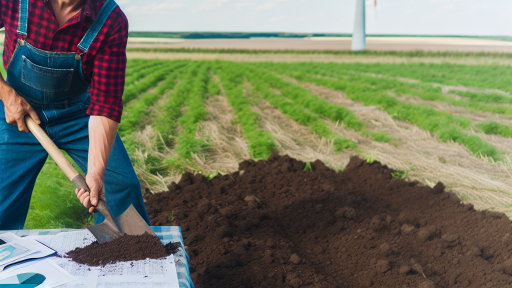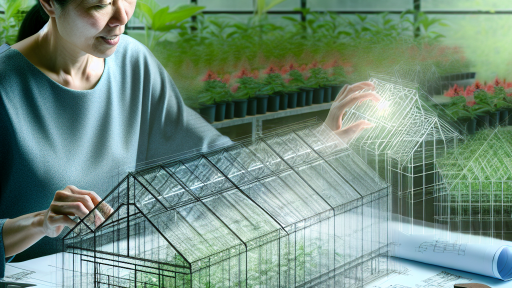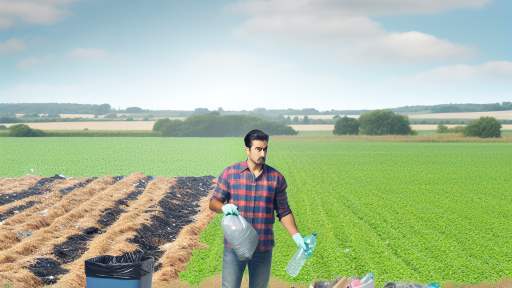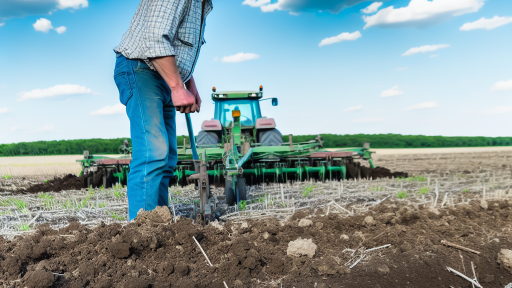Introduction to Integrated Pest Management
Defining IPM
Integrated Pest Management (IPM) combines different management approaches.
This method aims to control pests effectively and sustainably.
Farmers use IPM to reduce dependency on chemical pesticides.
Importance of IPM in Sustainable Agriculture
IPM is crucial for maintaining environmental health.
It helps preserve beneficial insects and pollinators.
Moreover, it promotes soil health and biodiversity.
Strategies for Implementing IPM
Successful implementation of IPM requires several strategies.
Crop rotation minimizes pest populations by disrupting their life cycles.
Additionally, selecting pest-resistant plant varieties offers natural protection.
Monitoring pest populations is vital for informed decision-making.
Farmers can use traps and field scouting for effective monitoring.
Benefits of IPM for Farmers
IPM reduces costs associated with pesticide application.
Farmers experience healthier crop yields due to reduced pest damage.
In the long term, IPM practices lead to sustainable farming systems.
Consequently, farmers enhance their profitability and marketability.
Transform Your Agribusiness
Unlock your farm's potential with expert advice tailored to your needs. Get actionable steps that drive real results.
Get StartedUnderstanding the Components of IPM
Monitoring
Monitoring plays a crucial role in Integrated Pest Management (IPM).
This step involves observing pest populations and their natural enemies.
Farmers can use traps and field scouting to gather data.
Regular monitoring allows for timely interventions before pest outbreaks occur.
Additionally, it helps in identifying beneficial insects that support crop health.
Prevention
Prevention is the first line of defense in IPM strategies.
This can include crop rotation and selecting resistant plant varieties.
Maintaining healthy soil also contributes to stronger plants.
Cover crops can protect and enhance soil quality.
Moreover, proper irrigation practices can minimize pest attraction.
Intervention Strategies
Intervention strategies are crucial when pest populations are above threshold levels.
Cultural controls, like altering planting dates, can disrupt pest life cycles.
Biological controls involve using natural enemies to manage pests.
In certain cases, targeted chemical controls are necessary for severe infestations.
Each intervention should be assessed for its potential impact on the environment.
Integration of IPM Components
Integrating monitoring, prevention, and intervention creates an effective IPM program.
This approach reduces reliance on chemical pesticides.
Furthermore, it enhances sustainable agricultural practices.
By adapting practices based on regular assessments, farmers can achieve optimal productivity.
IPM fosters healthier crop yields while supporting ecosystem health.
Assessing Pest Populations and Damage Thresholds
Understanding Pest Populations
Pest populations fluctuate based on environmental conditions and cultivation practices.
Farmers must actively monitor these changes to anticipate impacts on crops.
Using traps and visual inspections offers reliable insights into pest numbers.
Regular assessments help in recognizing patterns of pest behavior over time.
Showcase Your Farming Business
Publish your professional farming services profile on our blog for a one-time fee of $200 and reach a dedicated audience of farmers and agribusiness owners.
Publish Your ProfileBy tracking pest populations, farmers can make informed decisions regarding pest management.
Establishing Damage Thresholds
Damage thresholds define the level of pest presence that necessitates intervention.
Farmers should assess the economic, aesthetic, and health impacts of pests.
Using established research can guide the setting of these thresholds effectively.
Thresholds may vary based on crop type, pest species, and growing conditions.
Farmers can adjust response strategies according to these thresholds.
Implementing Monitoring Strategies
Integrated Pest Management (IPM) relies heavily on regular monitoring.
Combining visual inspections and traps improves the accuracy of population assessments.
Farmers should implement a routine monitoring schedule throughout the growing season.
This proactive approach allows for timely pest control decisions.
Utilizing Data for Informed Decisions
Data gathered from monitoring should guide management decisions.
Farmers can analyze trends and make predictions about future pest outbreaks.
Utilizing dashboards or pest management software may streamline this process.
Informed decisions lead to healthier crops and more efficient resource use.
Evaluating Outcomes
After implementing IPM strategies, evaluation is critical.
Farmers should assess the effectiveness of interventions and modifications over time.
Gathering feedback and results can refine future pest management practices.
Sharing insights with local farming communities enhances overall knowledge dissemination.
Explore Further: Transforming Farm Waste into Valuable Resources
Cultural Practices in IPM
Crop Rotation
Crop rotation enhances soil health and reduces pest problems.
This practice involves changing the type of crop grown in a specific area each season.
For instance, rotating legumes with cereals can replenish nitrogen levels.
Additionally, it disrupts pest life cycles by breaking their habitat.
Farmers like Maria Gonzalez have successfully implemented this technique.
As a result, they observed improved yields and reduced chemical usage.
Tillage Practices
Tillage practices influence soil structure and pest management.
Conventional tillage can disturb beneficial soil organisms.
Conversely, no-till or reduced-till practices preserve soil moisture and health.
Farmers can adopt various tillage systems based on soil conditions.
For example, John Mitchell uses minimal tillage to promote ecological balance.
This adjustment has led to increased earthworm populations in his fields.
Resistant Varieties
Choosing resistant varieties is crucial for sustainable crop production.
These varieties can withstand pests and diseases more effectively.
For example, disease-resistant tomatoes thrive in conditions where others fail.
Farmers like Emily Chen select seeds based on local pest pressures.
This strategy minimizes the need for chemical interventions.
Consequently, it supports healthier ecosystems and enhances productivity.
Find Out More: Conservation Tillage Basics For Beginner Farmers
Biological Control Methods
Introduction to Biological Control
Biological control relies on natural enemies to manage pests effectively.
This method promotes a balanced ecosystem in agricultural settings.
Showcase Your Farming Business
Publish your professional farming services profile on our blog for a one-time fee of $200 and reach a dedicated audience of farmers and agribusiness owners.
Publish Your ProfileFarmers can reduce reliance on chemical pesticides through these methods.
Types of Beneficial Organisms
Beneficial organisms include predators, parasites, and pathogens.
For example, ladybugs and lacewings feed on harmful aphids.
Additionally, parasitic wasps can control caterpillar populations.
Predators
Predators play a vital role in pest management.
They feed on pests, helping to keep populations in check.
Planting flowers can attract these natural predators.
Parasites
Parasites live on or in a host organism, often harming it.
This method can effectively control pest species over time.
Some farmers release parasitic wasps to target specific pests.
Pathogens
Pathogens include bacteria, fungi, and viruses that affect pests.
These organisms can infect and kill pests, reducing their numbers.
Using a pathogen like the Bacillus thuringiensis can help control caterpillars.
Implementing Biological Control
Integration of biological control requires planning and monitoring.
Farmers should assess their ecosystem before implementing this method.
Moreover, they need to identify specific pests and their natural enemies.
Creating a Favorable Environment
Farmers can enhance habitats for beneficial organisms.
Providing shelter and food sources is crucial.
Planting cover crops can support beneficial insect populations.
Monitoring and Adjusting Practices
Regular monitoring helps track pest and beneficial populations.
Farmers should adjust their practices based on observations.
Ultimately, flexibility enhances the effectiveness of biological control.
Implications of Biological Control Methods
Biological control offers a sustainable approach to pest management.
By using beneficial organisms, farmers can achieve healthier crops.
This method not only protects the environment but also boosts productivity.
Delve into the Subject: Sustainable Farming: Crop Rotation Best Practices
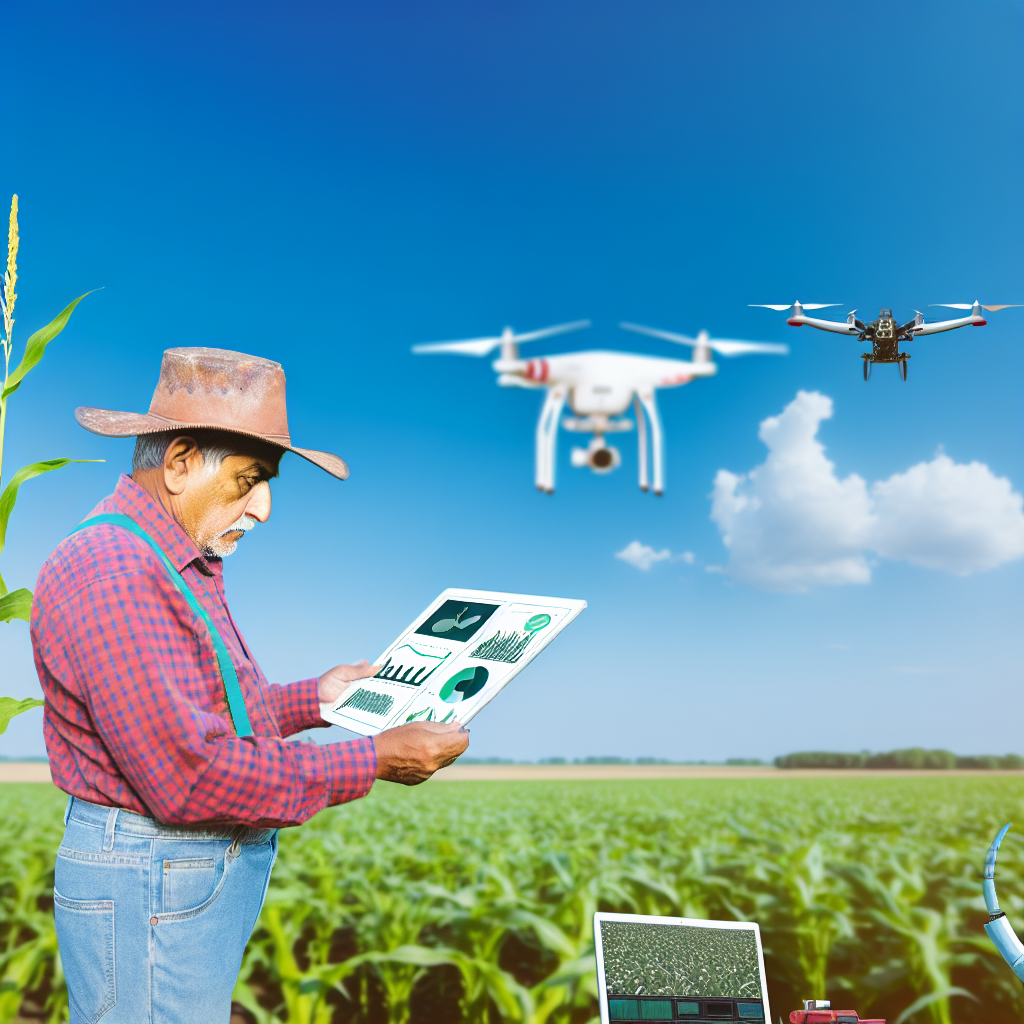
Chemical Control Options
Pesticides as a Last Resort in an IPM Program
Pesticides can play a vital role in crop management.
However, they should only be used when necessary.
An Integrated Pest Management (IPM) program emphasizes this principle.
The goal is to manage pest populations with minimal environmental impact.
Before applying pesticides, evaluate other control methods.
These methods may include cultural practices, biological controls, and physical methods.
Using these options can prevent reliance on chemical controls.
Nonetheless, pesticide application may be necessary at times.
Ensure that their use aligns with IPM strategies.
Evaluating Pesticide Use
First, assess the pest situation thoroughly.
Identify the specific pest and its life cycle.
This information helps determine the best control approach.
Next, consider the potential impacts of pesticides.
Think about effects on beneficial insects and the environment.
Showcase Your Farming Business
Publish your professional farming services profile on our blog for a one-time fee of $200 and reach a dedicated audience of farmers and agribusiness owners.
Publish Your ProfileMoreover, consult local guidelines for approved pesticide use.
Choose products with the lowest toxicity to non-target organisms.
Application Techniques
The method of application also influences pesticide effectiveness.
Use targeted application techniques to minimize drift.
Consider applying during times when beneficial insects are less active.
Additionally, follow manufacturer instructions carefully.
This ensures proper dosage and timing for optimal results.
Monitoring Outcomes
After pesticide application, continuous monitoring is crucial.
Assess its effectiveness against the targeted pest.
Look for any negative effects on crops or non-target organisms.
This information informs future pest management decisions.
Furthermore, document your findings for reference.
This documentation can improve your IPM strategy over time.
Explore Further: Implementing Agroforestry for Farm Diversity
Implementing an IPM Plan
Understanding Integrated Pest Management
Integrated Pest Management, or IPM, combines various strategies to manage pests.
This method emphasizes the holistic approach to pest control.
Farmers focus on long-term prevention and control measures.
Additionally, they aim to minimize risks to the environment and human health.
Assessing Your Farm
First, evaluate your farm’s current pest challenges.
Identify the types of pests affecting your crops.
Monitor pest populations regularly to track changes.
Furthermore, assess environmental factors that contribute to pest issues.
Setting Action Thresholds
Establish thresholds for deciding when to act against pests.
These thresholds define the level of pest infestation that warrants intervention.
Consider factors such as crop value and market conditions.
Adjust these thresholds based on specific pest behaviors.
Implementing Preventive Measures
Preventive measures reduce pest pressure before problems arise.
Rotate crops to disrupt pest life cycles.
Encourage beneficial insects that act as natural predators.
Practice proper sanitation to eliminate potential pest habitats.
Monitoring and Identifying Pests
Regularly monitor crops to identify pest populations early.
Use traps and visual inspections for monitoring effectiveness.
Identify pests accurately to apply the correct management strategies.
Applying Control Methods
Choose control methods based on your pest assessment.
Consider cultural, mechanical, biological, and chemical options.
Cultural methods may include crop rotation and resistant varieties.
Mechanical options can involve traps and physical barriers.
Always apply chemical controls as a last resort.
Evaluating the Outcomes
After implementing control methods, evaluate their effectiveness.
Monitor pest populations to assess changes.
Showcase Your Farming Business
Publish your professional farming services profile on our blog for a one-time fee of $200 and reach a dedicated audience of farmers and agribusiness owners.
Publish Your ProfileReview yields and crop quality to determine success.
Use this information to adjust your management plan for the future.
Staying Informed and Adapting
Continue educating yourself about pest management strategies.
Attend workshops and collaborate with agricultural experts.
Stay updated on new research and technologies in pest management.
Adapt your IPM plan as needed to improve results.
Measuring the Effectiveness of IPM
Importance of Metrics
Effective metrics are essential for assessing IPM success.
They provide a clear picture of crop yield improvements.
Metrics also help in evaluating pest reduction efficiently.
Key Crop Yield Metrics
Monitoring crop yields is vital for any agricultural system.
Common metrics include overall productivity and economic return.
Farmers must gather data on yield per hectare regularly.
Tracking trends over seasons reveals valuable insights.
Pest Reduction Metrics
Assessing pest populations is equally important in IPM.
Pest traps offer quantitative data for analysis.
Farmers should record types and numbers of pests captured.
Monitoring pest-related crop damage also provides crucial information.
Combining Metrics for Comprehensive Analysis
Integrating crop yield and pest reduction metrics delivers comprehensive insights.
This approach allows for more informed decision-making.
Graphs and charts can effectively visualize these metrics.
By analyzing data together, farmers can better understand causatives.
Using Technology for Data Collection
Modern technology enhances the measurement process.
Mobile applications can streamline data entry and analysis.
Additionally, remote sensing technology offers real-time data.
Such tools improve monitoring efficiency and effectiveness.
Feedback Loops for Continuous Improvement
Creating feedback loops fosters continuous improvement in IPM practices.
Farmers should analyze data from previous seasons frequently.
This analysis informs future adjustments to IPM strategies.
Regularly revisiting practices ensures relevance and effectiveness.
Additional Resources
IPM reduces insecticide applications by 95% while maintaining or …

